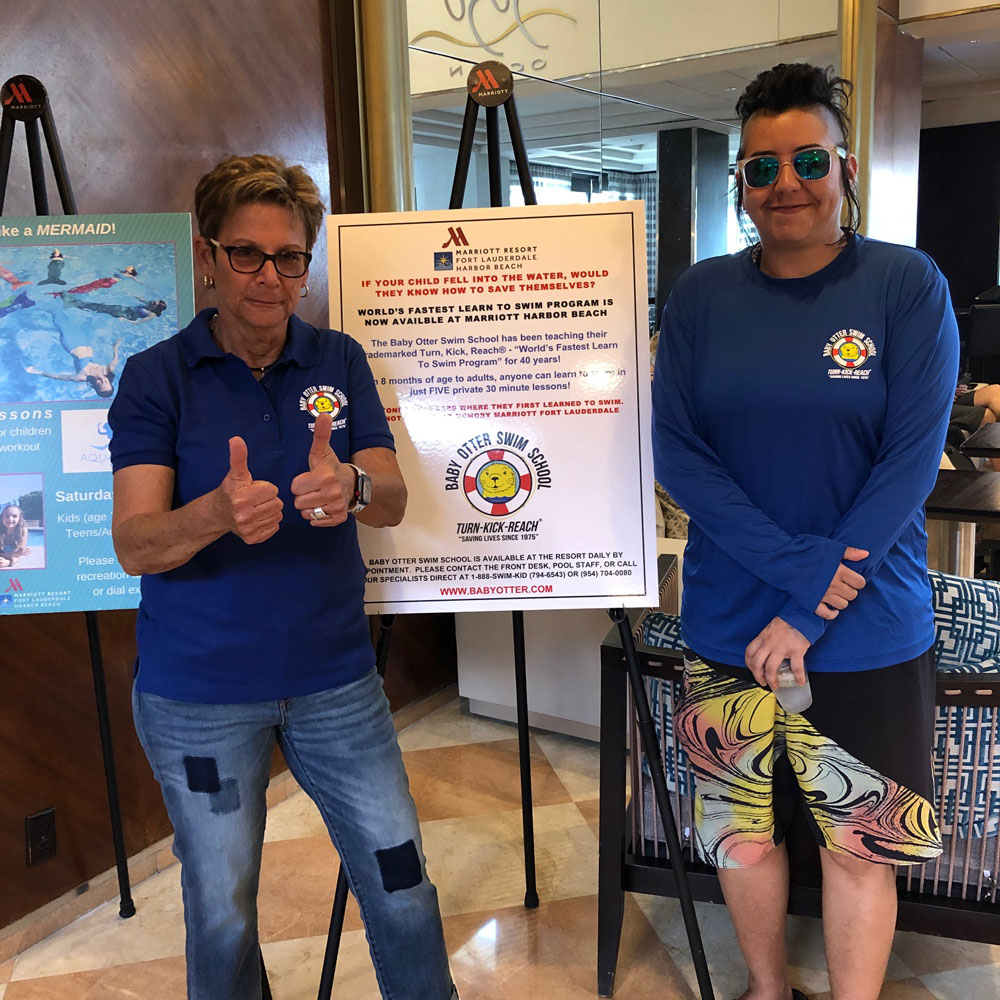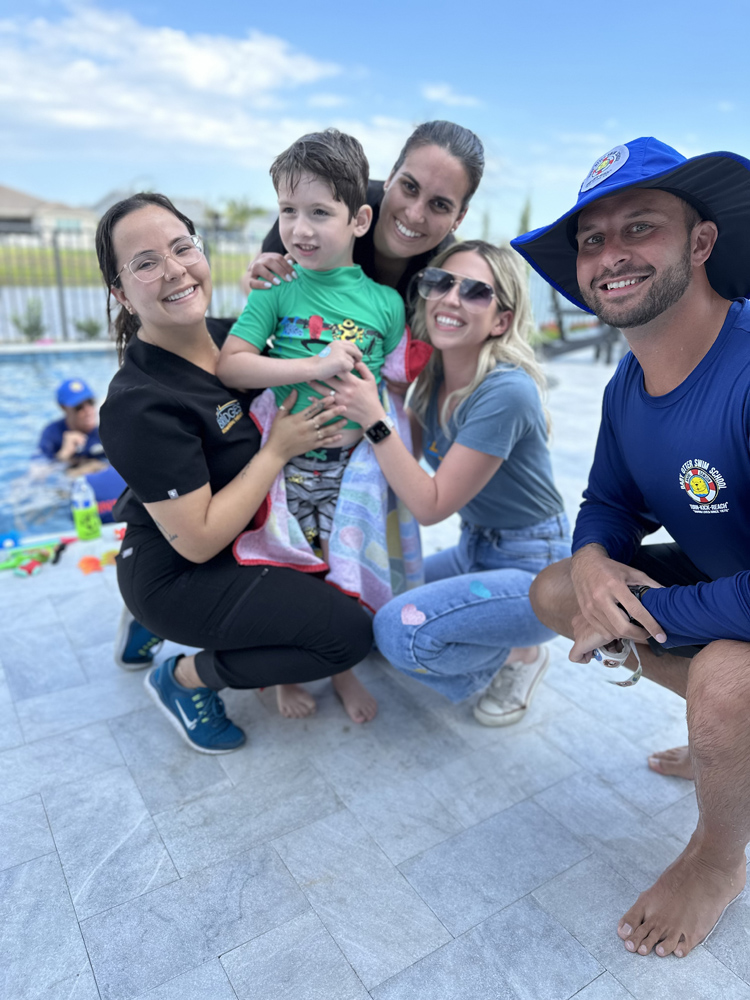Why Baby Otter Swim School Stands Apart as a Trusted Name in Aquatic Learning
Why Baby Otter Swim School Stands Apart as a Trusted Name in Aquatic Learning
Blog Article
Every Little Thing You Need to Find Out About Swimming Lesson for Beginners: A Comprehensive Guide
Recognizing the principles of swimming lessons for beginners is crucial for promoting both safety and ability development in the water. Selecting a certified teacher who highlights a helpful understanding environment sets the stage for success. As amateurs start this water trip, understanding necessary strategies such as breathing and body positioning ends up being extremely important. The course to ending up being a positive swimmer is usually fraught with obstacles, including the typical concern of water. What methods can be used to make certain a positive and enriching experience for those just beginning?
Relevance of Water Safety And Security
Water safety and security is critical for anyone venturing into aquatic atmospheres, specifically novices. Comprehending the potential risks connected with water activities is essential to ensure a enjoyable and secure experience. Data indicate that sinking remains a leading reason of accidental fatality, emphasizing the demand for heightened awareness and preventive steps.
The primary step in water safety and security includes acknowledging the importance of guidance. Adults need to always keep a close eye on youngsters and unskilled swimmers, as also shallow water can position considerable risks. Furthermore, using appropriate flotation protection devices, such as life vest, is crucial, specifically for those who are not yet certain in their swimming capabilities.
An additional crucial aspect is familiarizing oneself with the specific setting. Each body of water has special qualities, consisting of currents, tides, and temperature level, which can affect safety. Swimmers should also know weather and potential risks, such as immersed objects or sudden modifications detailed.
Locating the Right Teacher
Choosing a qualified teacher is an important action in guaranteeing a safe and efficient knowing experience for newbies. When browsing for a trainer, consider their certifications and experience. Search for people who are licensed in CPR and Emergency Treatment, as well as those that hold identified swimming mentor qualifications, such as those from the American Red Cross or YMCA.

Additionally, assess the trainer's communication abilities. They ought to have the ability to share instructions clearly and show techniques successfully. A connection between the teacher and the student can improve inspiration and foster a positive learning environment.
Lastly, consider logistics such as course location, dimension, and organizing. Smaller sized class sizes frequently enable even more tailored interest, which can be advantageous for beginners. By very carefully reviewing these variables, you can find an instructor who will certainly add to a successful swimming experience.
Necessary Swimming Methods
Understanding vital swimming strategies is important for newbies intending to develop self-confidence and efficiency in the water. The foundation of effective swimming hinges on grasping the basic skills that enhance both safety and security and satisfaction throughout practice.
Among the first strategies to concentrate on is correct breathing. Beginners ought to find out to exhale undersea and breathe in quickly when turning their heads sideways, making sure a steady rhythm that sustains endurance. In addition, body placing plays a vital role; swimmers ought to maintain a streamlined position, maintaining the body flat and straight to minimize drag.

Last but not least, recognizing the significance of buoyancy can not be overlooked. Mastering floating strategies will certainly boost comfort and stability in the water. By concentrating this post on these necessary methods, newbies can develop a strong swimming structure, establishing them up for better success in future lessons and even more sophisticated abilities.
Various Swimming Styles
Numerous swimming styles exist, each offering unique techniques and benefits that accommodate various choices and goals. The four key strokes-- freestyle, butterfly, breaststroke, and backstroke-- create the structure of competitive swimming and entertainment practices.
Freestyle, likewise called the front crawl, is defined by a flutter kick and rotating arm motions, enabling maximum speed and performance. It is usually one of the most popular choice for newbies because of its straightforward strategy and versatility in various water settings.
Backstroke, performed on the back, employs a comparable flutter kick yet utilizes a windmill arm movement. This stroke improves body positioning and promotes relaxation in the water, making it an excellent choice for those who may really feel distressed while swimming.
Breaststroke includes a frog-like kick and simultaneous arm movements, promoting a slower speed that allows for boosted breathing control. This stroke is particularly beneficial for newbies as it motivates a natural rhythm.
Finally, the butterfly stroke, known for its challenging method, includes a dolphin kick and synchronised arm motions. While advanced, understanding it can considerably boost total swimming effectiveness. Welcoming these diverse styles can result in a well-shaped swimming experience.
Conquering Common Obstacles
Although swimming can be a gratifying activity, beginners frequently come across various obstacles that might hinder their progress and pleasure in the water. Beginning by accustoming to the water in shallow areas, and method breathing methods outside of the water to construct self-confidence.
An additional obstacle is mastering standard methods, such as floating and stroke technicians. Novices need to focus on correct body positioning and breathing patterns. Using flotation protection devices can assist in establishing a sense of equilibrium while exercising stroke fundamentals.

Finally, locating a helpful atmosphere, whether with team lessons or individually coaching, can significantly enhance discovering. Useful feedback and encouragement are crucial for cultivating and overcoming challenges improvement. By internet resolving these typical issues head-on, newbies can cultivate a positive swimming experience and development at a comfy rate.
Conclusion
In summary, swimming lessons for novices encompass critical aspects such as safety, effective instruction, and mastery of vital techniques. Emphasis on core skills, consisting of breathing and body positioning, help in developing confidence in the water.
Understanding the fundamentals of swimming lessons for novices is essential for cultivating both safety and security and skill growth in the water.Water safety and security is extremely important for any person venturing right into water environments, particularly How To Become A Swim Instructor beginners. Arm activities need to likewise be coordinated with the kick; novices should learn the value of getting to onward and drawing via the water properly.
Although swimming can be a rewarding activity, newbies usually run into different obstacles that might hinder their development and pleasure in the water. Begin by adjusting to the water in superficial locations, and method breathing strategies outside of the water to construct confidence.
Report this page